1.
In design analysis, the use of the artefact is considered under
cost.
ergonomics.
function.
safety.
2.
One method of carrying out investigation when designing an artefact is
developing ideas.
library research.
possible solutions.
workshop operation.
3.
Straight distances are measured with a
pair of compasses.
pair of dividers.
protractor.
rule.
4.
The process of writing information on a working drawing is known as
drawing.
lettering.
projections.
sketches.
5.
Which of the following wires melts when there is excessive current?
Earth wire
Fuse wire
Live wire
Neutral wire
6.
In isometric drawing, the inclined lines are drawn to the horizontal at
15o.
30o.
45o.
60o.
7.
The first sign of spoilage on cooked rice is
moulding and unpleasant smell.
sliminess and watery nature.
sign of maggots and colour change.
change in texture and bubbles on the surface.
8.
A common chemical used for preserving fish in Ghana is
saltpetre.
sodium glutamate.
salt.
vinegar.
9.
Ama made ten table runners at a total cost of GH₵ 150.00 and sold one table runner for GH₵ 25.00. What is the total profit?
GH₵ 350.00
GH₵ 250.00
GH₵ 200.00
GH₵ 100.00
10.
A suitable fruit for making marmalade is
pineapple.
orange.
pawpaw.
guava.
11.
Upper case letters are also known as
small letters.
baseline letters.
capital letters.
line letters.
12.
A preliminary design is done to
increase production.
produce ideas.
improve creativity.
guide production.
13.
Shading with lines is known as
cross hatching.
hatching.
tonal value.
stippling.
14.
Which type of lettering is usually used for emphasis?
Freestyle
Italics
Gothic
Roman
15.
When a hue is mixed with black, it becomes
tinted.
neutral.
shaded.
complementary.
16.
Electrical current is carried by
battery.
bulb.
fuse.
wires.
17.
The arrangement of blocks to avoid vertical continuous joint is termed
batching.
bonding.
racking.
toothing.
18.
Which of the following lines is used for dimensioning?




19.
PVA is a type of
abrasive.
adhesive.
aggregate.
finish.
20.
When a file is clogged with iron filings, the fault is referred to as
blocking.
chipping.
loading.
pinning.
21.
The bolster is used in conjunction with the club hammer to cut
bricks.
metal.
plastics.
timber.
22.
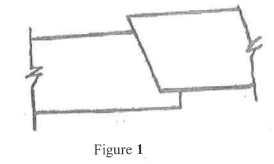
The joint shown in Figure 1 is a
butt joint.
grooved-lap joint.
grooved joint.
lap joint.
23.
Use Figure 2 to answer the question below
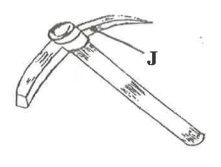
Figure 2
The figure shown is a
brick hammer.
mallet.
mattock.
pick axe.
24.
Use Figure 2 to answer the question below

Figure 2
The part labelled J is made of
aluminium.
medium carbon steel.
odum.
polyvinyl chloride.
25.
Which of the following timbers is used for making formwork?
Mahogany
Odum
Sapele
Wawa
26.
The right angled corner of a wall is checked with a
builder's square.
gauge rod.
straight edge.
tee square.
27.
Figure 3 shows the surface development of a solid. Use it to answer the question below.
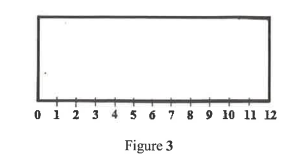
The developed surface is a
cone.
cylinder.
square prism.
triangular prism.
28.
Figure 3 shows the surface development of a solid. Use it to answer the question below.

A product that can be made from the developed surface is
chalk box.
funnel.
match box.
milk tin.
29.
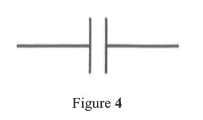
The electrical symbol shown in Figure 4 is a
battery.
capacitor.
cell.
resistor.
30.
Which of the following factors will make a household furniture weak?
Broken tongue at joint
Firm riveted joint
Glued butt joint
Sufficient glue at the joint
a)
The head of a school is organizing a graduation party for the J.H.S graduates.
State two factors that would determine the type of meal service.
b
i)
State two symptoms of scurvy.
ii)
State two characteristics of a seam.
c
i)
List two methods of drawing objects in pictorial view.
ii)
State two analysis questions based on ergonomics.
iii)
State one instrument used for drawing circles.
d
i)
Define packaging.
ii)
State three benefits of packaging.
iii)
List two important information on a good package.
a
i)
Make a freehand pictorial sketch of a brick.
ii)
Show the standard dimension of the brick on the sketch in (a)(i).
b)
List three materials suitable for making rivets.
c
Copy and complete the table below.
| TYPE OF TIMBER | ONE PROPERTY | ONE USE | |
| (i) | Wawa | ||
| (ii) | Odum | ||
| (iii) | Mahogany | ||
d
Figure 1 shows the sketch of a planed timber board to be smoothened and polished. Use it to answer Questions (d)(i) and (d)(ii).
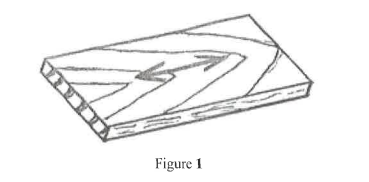
i)
Name the suitable abrasive material to be used to smoothen the timber surface.
ii)
State one purpose of polishing the smoothened surface of the timber.
a
i)
Make a freehand pictorial sketch of a rip saw and Label any two parts on the sketch.
ii)
State one use of the rip saw.
b)
Copy and complete the table below.
| OPERATION | TWO TOOLS REQUIRED FOR EACH OPERATION | |
| (i) | Cutting tenon joint | (i) (ii) |
| (ii) | Soldering sheet metals | (i) (ii) |
c
Figure 2 shows a sketch of a wooden block. Draw to full size:
i)
the front view in the direction of arrow Z;
ii)
the plan.
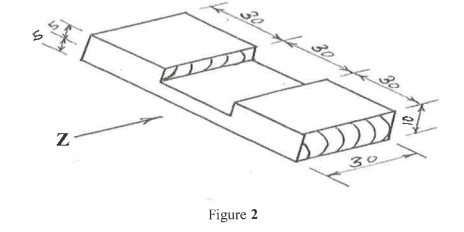
a
i)
Make a frehand pictorial sketch of a steel rule.
ii)
State one use of the steel rule.
iii)
State two methods of maintaining the steel rule.
b
State one use of each of the following tools:
i)
G-clamp;
ii)
Soldering iron;
iii)
Mould box.
c
Figure 3 shows the front elevation of a wall.
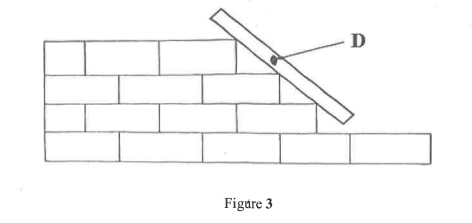
i)
State the number of courses of the wall.
ii)
Name the future continuation method shown on the wall.
iii)
Identify the tool labelled D on the sketch.